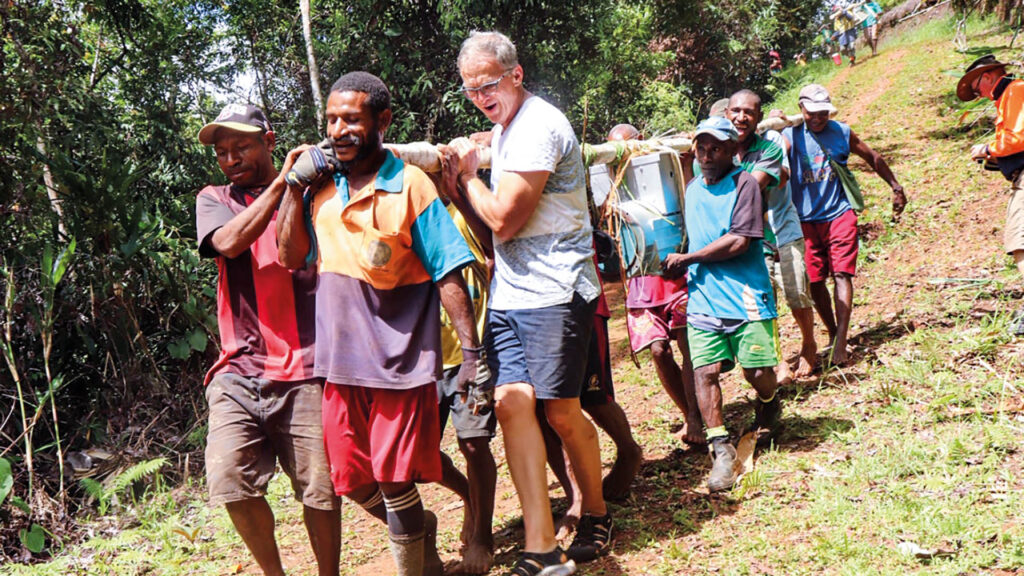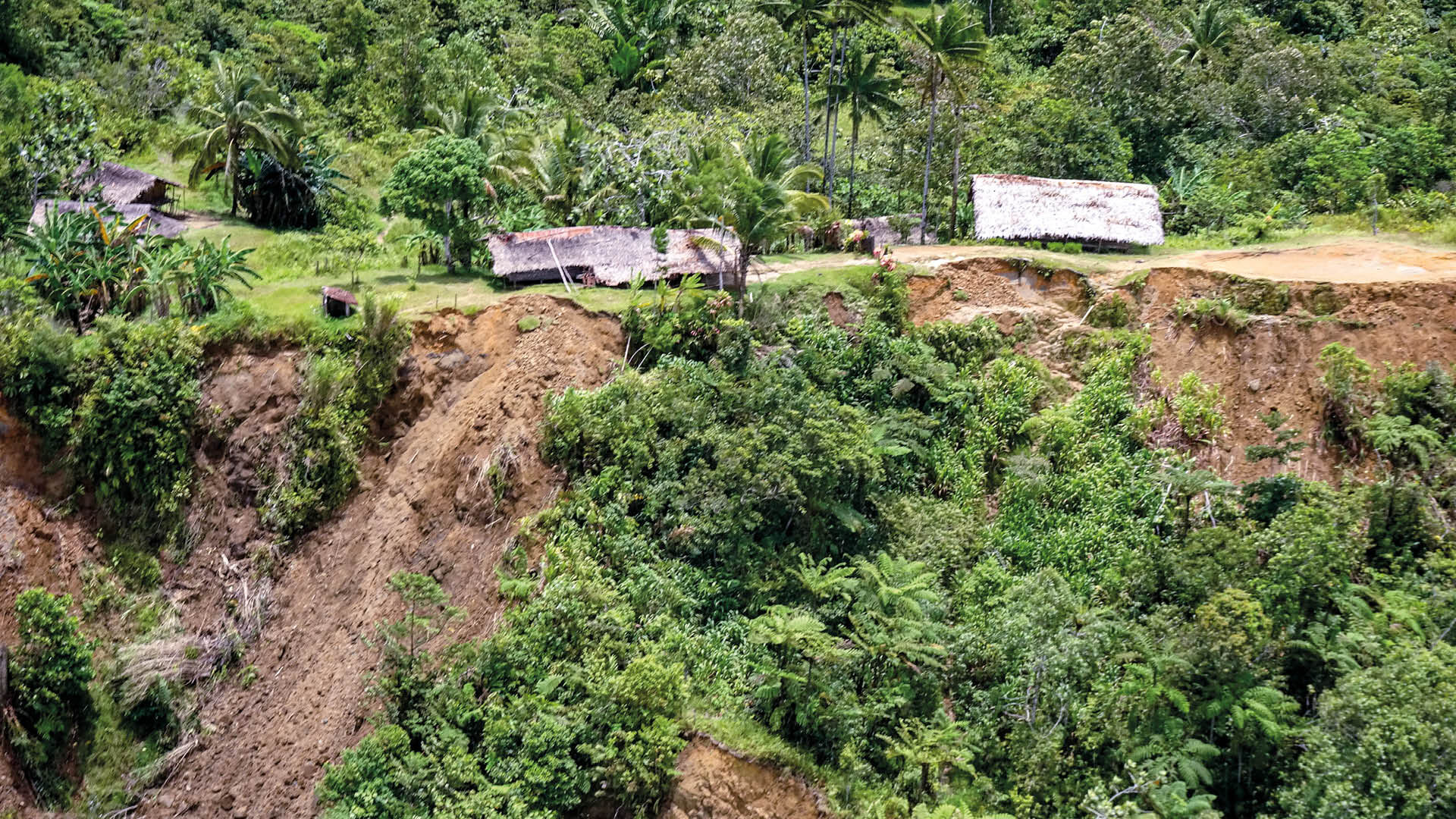
In February 2018, a series of devastating earthquakes hit Papua New Guinea, triggering landslides in the Southern Highlands, Hela, Enga and Western Provinces. The once pristine landscape was ravaged and thousands of remote, impoverished villagers were impacted, with many lives lost and homes and food gardens destroyed.
The adverse impacts were widespread and compounded by the destruction of a hydro plant that powered the area, located in the mission station of Mougulu. The hydro generator provided essential power to run life-saving equipment at the nearby health centre and hospital wards; technology and communications, including between doctors and aircraft and running a local radio station that broadcasts nightly; and to power the mission, community buildings and staff and teacher houses.
“Having provided support to 30,000 people in the Strickland Bosavi region for 33 consecutive years, the impact of the plant being buried under four metres of rubble from the landslide was significant,” said Charles Guesdon, of the Rotary Club of Caboolture, Qld. “The local people were devastated; it had made such an important contribution to their lives.”
Rotary District 9600, which encompasses an area north of the Brisbane River, also includes Papua New Guinea, the Solomon Islands and Nauru. Then district governor John Lane asked Charles, a former district governor, to manage a humanitarian aid project utilising Rotary Australia World Community Service (RAWCS) to raise funds to support those in need within their own district.
With the immediate food aid, materials for temporary housing, water harvesting systems and tools to rebuild their lives provided through international aid organisations and government support, the local community identified the restoration of the hydro generator to be the most beneficial project for the RAWCS fundraising effort.
The mission’s founder, Tom Hoey, who built the original hydro plant, worked to clear out most of the rubble, however, the estimated cost to restore the plant was more than the mission could afford due to other priorities.
“Although the AU$32,300 Rotary Disaster Relief funds were insufficient to fund the whole hydro restoration, it gave sufficient incentive for the mission to postpone some important, but lower priority, activities to fund the balance, about two thirds of the total cost,” said Charles, who served as Queensland-based project manager.
“Because all materials had to be air freighted in, a project of this kind is expensive. For example, 100 bags of sand had to be flown in from nearby Fuma Village, a treacherous, eight-hour walk away, with difficult river crossings. It was over budget, but it was very important to build extra thick, strong concrete walls and diversion walls to protect the hydro generator and equipment.”
At the time, Russ Stephenson, of the Rotary Club of Nambour, Qld, was involved in the global grant Adopt-a-Village project to alleviate malnutrition in the Strickland Bosavi region, so he was able to provide on-the-ground monitoring of the project.
A team of experienced volunteers from Australia assisted 25 local villagers in rebuilding the hydro plant, including replacing damaged pipes and rebuilding the old generator room with a more substantial, landslip-resistant concrete bunker. The hydro plant was operational again in March this year.
“The restored hydro scheme will serve the Mougulu community for many years to come; a sustainable Rotary contribution towards better lives for the impoverished people of the Strickland Bosavi region of Papua New Guinea,” Charles said.
By Kylie Hatfield
